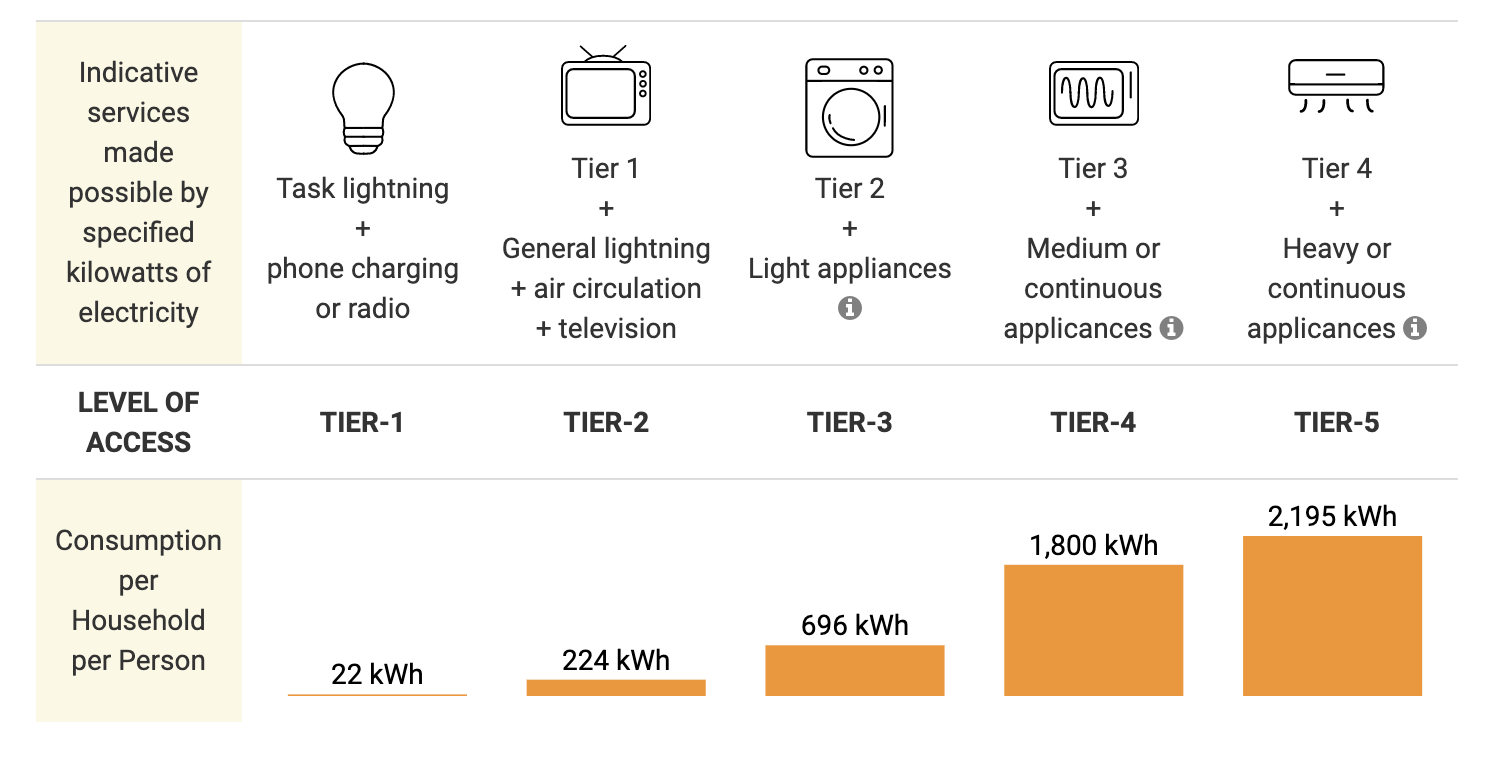Access to electricity is widely-used and important metric to understand what share of the population have access to modern energy.
But what does it mean to have ‘access to electricity? What criteria must be met for someone to count as having access?
What does it mean to have access to electricity?
The United Nations adopts the World Bank’s Multi-Tier approach to electrification. This approach measures electricity access and consumption from Tier 1 (the lowest level of access) to Tier 5 (the highest level of access). The five tiers are detailed in the next section.
Tier 0 means a household has no access to electricity.
To pass the basic binary threshold of ‘having access to electricity’ a household must meet the criteria of Tier 1.
This means having a source of electricity in the household for which a family can afford electricity to power very basic appliances. It equates to approximately 22 kilowatt-hours of power per person per year. This is only enough to provide a very basic light – such as a light at night for reading – and enough to charge a mobile phone.
What this makes clear is that meeting the criteria for electricity access does not necessarily mean that an individual can afford electricity for basic household appliances such as a refrigerator, washing machine, television, or heating. It is a very low threshold.
Five tiers of electrification
The World Bank defines five tiers of electrification. Tier 0 means a household does not have access to electricity. Below we have listed some of the basic criteria for each tier.1 These are also shown in the graphic. Full criteria are available here.
Tier 1
- Consumption per person per year: 22 kilowatt-hours (kWh)
- Indicative use of appliances: task lighting and phone or radio charging
- Available hours of electricity per day: At least four hours
Tier 2
- Consumption per person per year: 224 kilowatt-hours (kWh)
- Indicative use of appliances: Tier 1 appliances plus general lighting, air circulation and television
- Available hours of electricity per day: At least four hours
Tier 3
- Consumption per person per year: 696 kilowatt-hours (kWh)
- Indicative use of appliances: Tier 2 appliances plus refrigerator and washing machine
- Available hours of electricity per day: At least eight hours
Tier 4
- Consumption per person per year: 1,800 kilowatt-hours (kWh)
- Indicative use of appliances: Tier 3 appliances plus a microwave, space heating and iron
- Available hours of electricity per day: At least sixteen hours
Tier 5
- Consumption per person per year: 2,195 kilowatt-hours (kWh)
- Indicative use of appliances: Tier 4 appliances plus energy-intensive appliances like air conditioning
- Available hours of electricity per day: At least 23 hours

How is electricity access measured?
The World Bank’s Global Electrification Database compiles nationally representative household survey data plus census data to estimate rates of electricity access. This database is supplemented with data from the Socio-Economic Database for Latin America and the Caribbean, the Middle East and North Africa Poverty Database, and the Europe and Central Asia Poverty Database, all of which are based on similar surveys.
Surveys are usually published every two to three years. However, for some regions these household surveys are even more infrequent.
To fill these data gaps, researchers estimate access basic on a modeling approach developed by the World Health Organization (WHO). This means that when a country is missing a data point for a given year due to a lack of surveys, a modeled estimate is used based on the country’s historical trend plus an evaluation of regional trends.



